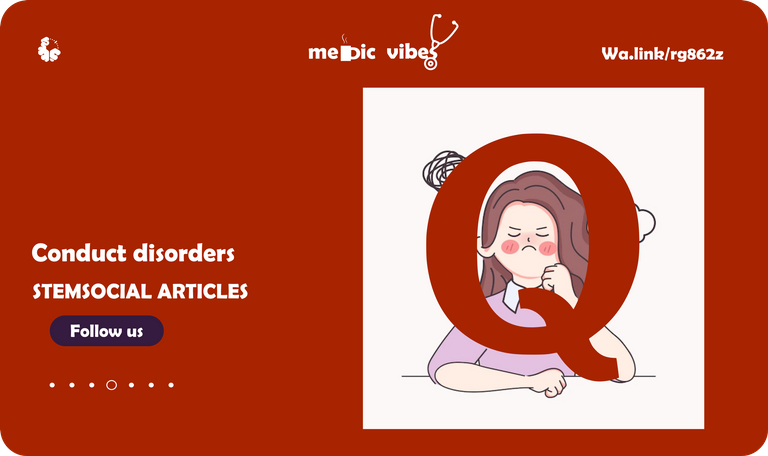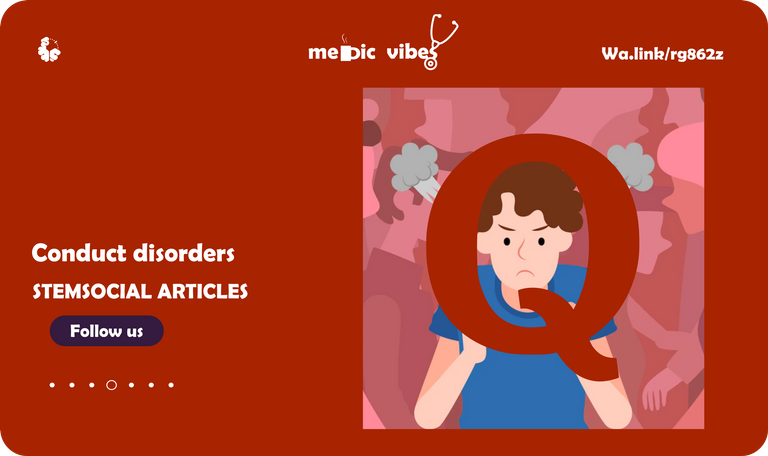In the last post, we saw how:
- ASPD: persistent disregard for rights, impulsivity, aggression, no remorse. Can be diagnosed with or without CD in childhood.
- Treatment for kleptomania involves a combination of therapy and medication to decrease the urge to steal and learn new coping strategies.
Welcome to Medic Vibes, where we discuss mental health disorders and make sense of them. Dr Ebingo Kigigha is a medical doctor (aspiring psychiatrist) and creative person (illustration and music). This has been our routine for four consecutive months. This month will be dedicated to Conduct disorder. In the first month, we discussed Depression, and in the subsequent month, anxiety. We just finished with Eating disorders.
In this post, we are looking at Tik Tok. To learn more just keep scrolling down. You can also skip to the key point of the post if you which or go to the conclusion to get the summary.

Internet compulsion, also known as Internet addiction, is a condition where a person spends a significant amount of their time on the internet. They are unable to resist the urge to constantly use the computer or surf the web. They may be attracted to specific websites that fulfill certain needs, such as shopping, sex, and interactive games.
The DSM-5 has proposed a condition called "Internet gaming disorder" which refers to individuals who spend excessive amounts of time playing games online, to the point it negatively impacts their social and work life. However, the disorder is not limited to gaming, and other activities can also be involved.
The internet can also be used to form relationships, but in some cases, it can become problematic and lead to abuse.
Deception is common, and it can take a harmful turn when sexual predators use false identities to exploit and harm their victims. These contacts are unregulated and difficult to detect. There have been reports of minors being lured into dangerous situations by sexual predators and cases of people who met online and married, only to later discover that they missed important details about each other.
The epidemiology of Internet compulsion disorder is not well-established due to the lack of consistent diagnostic criteria and methodology. However, some studies have estimated the prevalence of Internet addiction disorder to be between 1% and 8% of the general population, with higher rates among adolescents and young adults.
Studies also suggest that men are more likely to be affected than women, and that individuals with certain personality traits such as impulsivity, neuroticism, and low self-esteem may be at a higher risk of developing the disorder.
Additionally, the epidemiology of Internet addiction disorder can vary depending on the country and culture. Studies have reported that the prevalence of Internet addiction disorder is higher in some Asian countries compared to Western countries. Factors such as cultural attitudes towards technology and the availability of high-speed internet may contribute to this difference.
It is also worth noting that the prevalence of Internet addiction disorder may be underestimated as it is a relatively new phenomenon and there is a lack of consensus on the diagnostic criteria. Furthermore, the field of research is still developing and more studies are needed to fully understand the epidemiology of Internet addiction disorder.

Recurrence of Conduct Disorder(Reaction)

Image by felicities on Freepik
Jack Hodd who has interest in this topic explains that it is not possible to cure Conduct Disorder. This disorder encompasses a wide range of teenagers, including those who are antisocial, sociopathic, and psychopathic, and the only difference between them is the presence of callous-unemotionality.
Teenagers can outgrow the violence and aggression that is associated with Conduct Disorder, however, the unemotionality that is associated with the disorder is not curable. Therefore, if an individual has outgrown their callous-unemotionality traits, it is not possible for them to become a sociopath.
Conduct disorder is a serious behavioral and emotional disorder that affects children and adolescents. According to the National Institute of Mental Health (NIMH), it is characterized by a persistent pattern of aggressive, antisocial, and rule-breaking behavior. This can include physical aggression, cruelty to animals, theft, and vandalism.
The recurrence of conduct disorder is a serious problem because of the negative impact it can have on an individual's life. The disorder is characterized by aggressive, antisocial, and rule-breaking behavior, which can lead to problems with the law, difficulty in maintaining relationships, and difficulty in maintaining employment.
Research has shown that individuals who have been diagnosed with conduct disorder in childhood are at a higher risk of developing antisocial personality disorder as adults. Antisocial personality disorder is characterized by a persistent pattern of disregard for the law and the rights of others, which can lead to problems with the law and difficulty in maintaining relationships and employment.
According to a study published in the Journal of Child Psychology and Psychiatry, about 50% to 80% of children diagnosed with conduct disorder will continue to experience problems in adulthood. This highlights the importance of early intervention and treatment for conduct disorder in order to prevent the recurrence of symptoms and the negative impact it can have on an individual's life.
Additionally, research also suggests that there is a strong genetic component to the development of conduct disorder, with studies showing that children with a parent or sibling with conduct disorder are at a higher risk of developing the disorder themselves. This highlights the importance of addressing the underlying causes of conduct disorder, including genetic predisposition, environmental influences, and individual coping mechanisms, in order to prevent recurrence.
Research suggests that the recurrence of conduct disorder may be due to a number of factors, including genetic predisposition, environmental influences, and individual coping mechanisms. For example, a child who is exposed to a traumatic or violent environment may be at a higher risk of developing conduct disorder.
Additionally, a child who lacks the appropriate coping mechanisms to deal with stress and frustration may be more likely to engage in aggressive and rule-breaking behavior.
There are several treatment options available for conduct disorder, including therapy, medication, and behavioral interventions. It is important to seek professional help as soon as possible to address the recurrence of conduct disorder in order to prevent further harm to the child and the society. According to the American Academy of Child and Adolescent Psychiatry, the most effective treatment for conduct disorder is a combination of therapy, medication and parent training.

Treatment for internet addiction disorder
Treatment for internet addiction disorder is not yet fully understood and research is ongoing, but cognitive-behavioral therapy (CBT) is one of the most common approaches. CBT is a type of psychotherapy that helps individuals identify and change negative thoughts and behaviors related to their internet use. Other treatments that have been used include family therapy, support groups, and self-help groups. Medications such as antidepressants have also been used in some cases to help individuals manage symptoms of depression and anxiety that may be associated with internet addiction disorder. However, it's important to note that more research is needed to fully understand the most effective treatment options for this condition.
Questions
- What did you learn about Conduct disorders?
Conclusion
- Internet addiction disorder's prevalence varies by culture and traits.
- Conduct disorder is not curable, but early intervention and treatment can prevent recurrence and improve outcome.
- CBT is common treatment for Internet addiction disorder, research ongoing.

References
Page demarcations made with Inkscape.org


Thanks for your contribution to the STEMsocial community. Feel free to join us on discord to get to know the rest of us!
Please consider delegating to the @stemsocial account (85% of the curation rewards are returned).
You may also include @stemsocial as a beneficiary of the rewards of this post to get a stronger support.